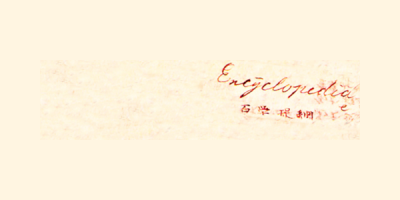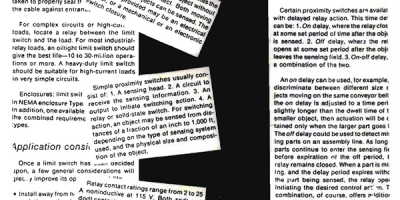
As I began to say last time, the link between language and character is varied and has at least three forms of connection.
First, language can directly express character, as in the case of the word “botchan” which is used to express a strongly childish male character.
However, this connection can be seen in things other than language.
For example, when asked: “Why doesn’t he get married?” The other party might say, “Uh, actually he’s…” then make a gesture I’ll call the “one-hand-by-the-mouth” sign. That is, she would hold up her right hand, wrist and fingers straight, and place the edge of her index finger against the left side of her mouth (or she would hold up her left hand to the right side of her mouth) while smiling, so as to tell the questioner: “He’s an okama,(1) so he won’t be taking a wife anytime soon.” Here, the “one-hand-by-the-mouth” sign expresses a direct connection to the “okama” character. This is identical to how the word “botchan” expresses a strongly childish male character. Even so, these kinds of gestures are few compared with words.
I call things that express character, like the word “botchan” and the “one-hand-by-the-mouth” gesture, “character labels.” I call the things expressed by them, like the strongly childish male or okama characters, “labeled characters.”
While there are gestures that act as character labels, words are far more numerous.
*
If someone says, “Those kinds of words and actions are unthinkable of Mr. Tanaka,” we know that there is a real, individual character, a “Mr. Tanaka character.” For example: “Mr. Tanaka is basically pretty ‘spacey,’ but recently he has shown a surprisingly ‘passionate’ side of himself…” That is, his character, which fundamentally shouldn’t change, has these contrary, coexisting properties which grate against one another. This is what human life is. Mr. Tanaka is “spacey” and “passionate” and whatever else he happens to be; all this fits into the framework of a single character, and nobody can describe that character completely.
There are many kinds of people around me. While it would be fun to examine each of their characters, one at a time, I would probably end up getting sued, and moreover I’m not confident that my readers would be able to follow me (this gives you an indication of how subtle these people are; no, really!).
In any case, labeled characters that use proper nouns, such as the “Mr. Tanaka character,” are less common than labeled characters which use general nouns that indicate the basis of the individual character—“okama,” “spacey,” “passionate”—so it probably wouldn’t hurt to develop our observations on them. I know it’s rather late in the game, but this is how I will proceed.
Coincidentally, here I used “okama” instead of “homosexual” etc. This is because, I think that in our evaluations of others, “okama” is more common than “homosexual.” Perhaps the word “okama” has a discriminatory ring to it. If this is so, it indicates that prejudice against homosexuality exists. General nouns that are used as character labels reflect various aspects of consciousness. Examining character brings this consciousness out into the light.
* * *









(1) Okama is slang for a man who is gay or transgendered, or a man who is (ostensibly) straight, but very feminine in his mannerisms. The hand gesture described in this paragraph is roughly analogous to the “limp wrist” gesture used in the West.